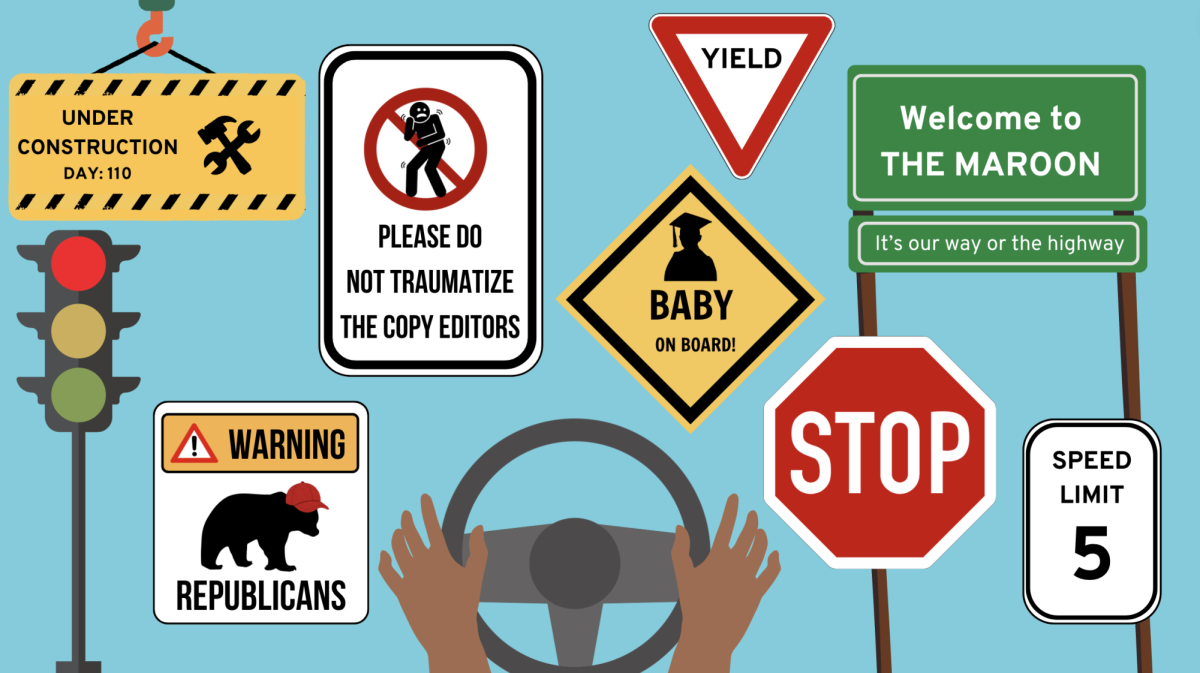Recently, UChicago and Northwestern have both had to deal with minor controversies regarding the relationship between free speech and sex on college campuses. At Northwestern, the administration is looking into a live sex demonstration that took place during a Human Sexuality class; on our own campus, two images in Vita’s most recent issue were reviewed in order to determine whether or not they violate Chicago municipal codes.
Northwestern’s sex demonstration has generated extensive national coverage that has refused to go away despite the fact that the actual event occurred over two weeks ago. The demonstration, which featured a nude woman penetrated by a sex toy, has been defended by some and, of course, denounced by others. Naturally, the heat has mostly been placed on Professor J. Michael Bailey, who consented to the demonstration. While Bailey eventually issued an apology, the apology itself seemed to me cursory and half-hearted, as if squeezed out of him by public pressure. A few details stand out to me:
The demonstration was an optional after-class event
The demonstration was unplanned
The students were warned prior to the actual act
So it’s clear, at least, that the students were fully aware of what they were about to witness; they voluntarily stayed to watch the demonstration. The students believed it would be, in some way, valuable, whether genuinely eye opening or simply story-to-tell-your-friends-worthy, for their compendium of college experiences. Even so, Northwestern’s administration, which initially defended Bailey’s right, succumbed to external criticism by launching an investigation.
It’s no surprise to see such an action engender so much controversy—sex has been, and likely always will be, a complicated and polarizing issue. This is especially the case in universities, where pushing boundaries is often considered a defining feature of the college experience, often blurring the line between what’s considered an acceptable expression of academic freedom and what’s considered obscene. Certainly, this line falls at different places for each individual. As a result, decision-making that purports to be for the benefit of the community as a whole becomes a tricky balancing act between free speech and public expectations.
Such is the fundamental question at the heart of Vita’s second issue as well, though this one is far less likely to spawn intense media attention. Vita’s two images in review, which both feature penetration, were included precisely to “push some boundaries” (as stated by Vita’s head designer Anne Quaranto). The publication’s fall quarter issue, while stylistically well done, seemed to provoke brief amusement rather than sustained discussion. With their new issue, Vita is admirably chasing something more important than a superficial, grandparent-approved examination of sex as art. It may or may not be successful in engendering the kind of discourse the magazine hopes for, but the fact that it’s even trying for it is a powerful justification for its existence. Too often experimentation—intellectual, sexual, and otherwise—in college is not genuine exploration but rather safe improvisation within the bounds of what is considered socially acceptable.
It’s easy to see a connection between the two occurrences, as both issues involve a judgment call and the pursuit of a conception of what it really means to foster an environment of intellectual freedom. Both universities, in response, are simply acting in the manner expected of them, and this is precisely the problem. In the study released earlier in the year on the state of free speech on the nation’s campuses, the University of Chicago received a “Red Light,” the worst designation possible. If the University had decided that the images were illegal according to Illinois’ obscenity laws, so be it; after all, the law is the law. But such a decision, if made in the future, should not be based on fears of parent backlash or decreased funds from upset donors. If college can’t be the place for students to explore and discuss these complex and often uncomfortable topics, where else? We could very quickly find ourselves mired in a staid, uninspired atmosphere that limits rather than liberates, an environment that actually contradicts the essential goal of the university to teach us how to think critically.
A final point: students must be over 17 (it has changed to 18 now) to purchase the magazine, and even more importantly, they have to, once again, voluntarily decide to purchase it in the first place. Buy, and look, at your own peril. The implicit message of the outraged in both these situations is that college-aged students can’t be trusted to make their own mature, informed decisions. Yet I’m guessing no one would try to make that particular argument in either case. If we’re to believe the university has our best interests at heart, our judgment, and our intellectual freedom, should be respected.
Emily Wang is a first-year in the College majoring in English.







